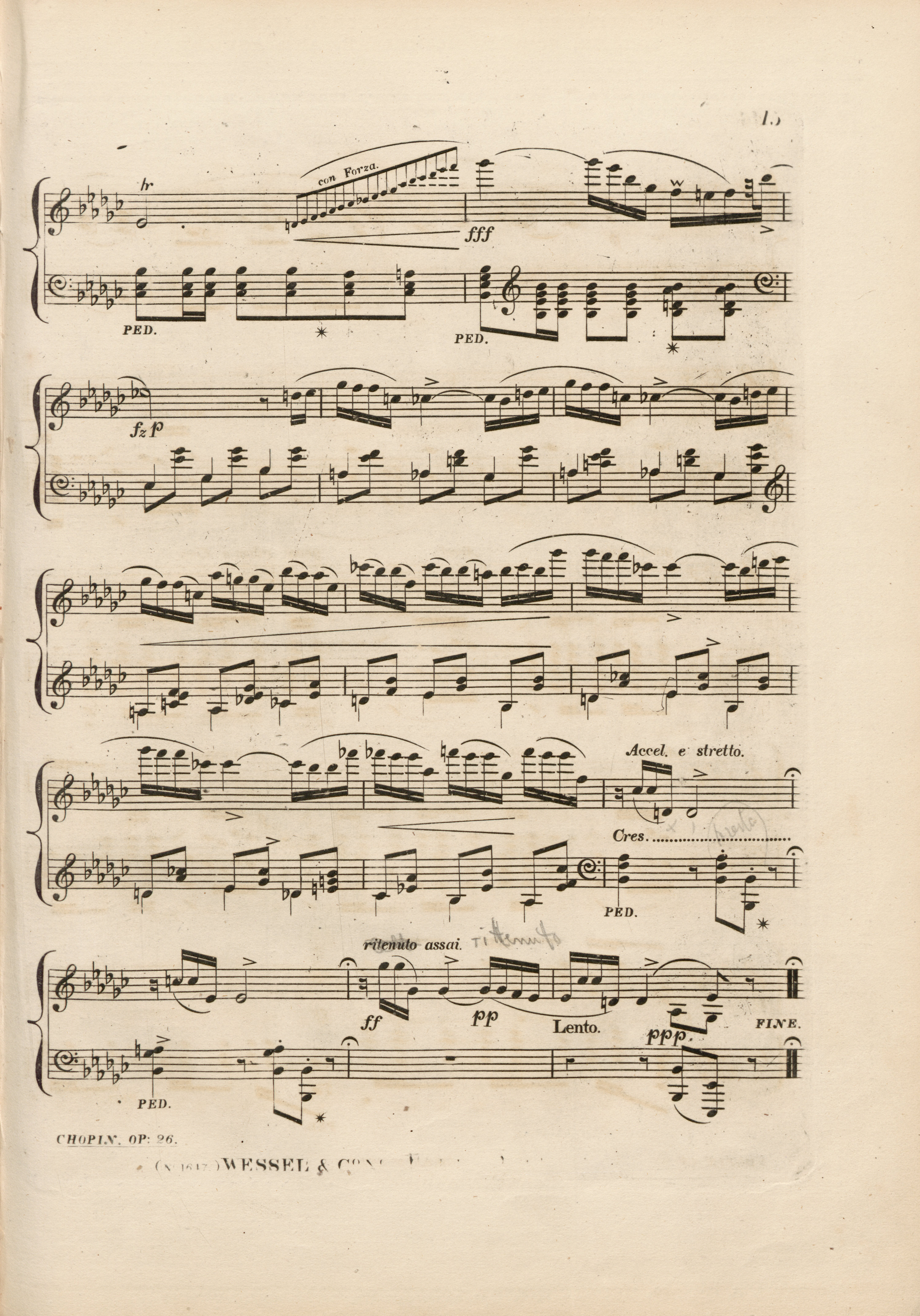



The extension of the  hairpins in FE (→GE,EE) may be explained with an accidental inaccuracy of the engraver or Chopin's proofreading. In the case of the latter, there arises a question whether the composer wanted to plan differently the dynamic details on the top of crescendo only in this place, at the last occurrence of this phrase and most probably due to the upcoming dramatic ending of the Polonaise, or whether he paid attention to the general inaccuracy of this sign only here and such planned crescendo should be applied in all analogous bars, hence also in bars 16, 64 and 120. This, in turn, make us think whether such a range difference can have a real impact on the interpretation. According to us, both versions have a musical sense:
hairpins in FE (→GE,EE) may be explained with an accidental inaccuracy of the engraver or Chopin's proofreading. In the case of the latter, there arises a question whether the composer wanted to plan differently the dynamic details on the top of crescendo only in this place, at the last occurrence of this phrase and most probably due to the upcoming dramatic ending of the Polonaise, or whether he paid attention to the general inaccuracy of this sign only here and such planned crescendo should be applied in all analogous bars, hence also in bars 16, 64 and 120. This, in turn, make us think whether such a range difference can have a real impact on the interpretation. According to us, both versions have a musical sense:
-
the
 hairpins written in A are compatible with the slurring and they indicate the moment of return of the one-bar melodic figure, being a starting point and core of this theme;
hairpins written in A are compatible with the slurring and they indicate the moment of return of the one-bar melodic figure, being a starting point and core of this theme; -
a longer sign appearing in the editions leads to the top note of this phrase, g
 3. Its meaning in the structure of the dramatic tensions exceeds the discussed phrase – it determines the culminant points of all sections of the main section of the Polonaise (bars 11, 16-18, 33-35 and their repetitions).
3. Its meaning in the structure of the dramatic tensions exceeds the discussed phrase – it determines the culminant points of all sections of the main section of the Polonaise (bars 11, 16-18, 33-35 and their repetitions).
One has to also take into account the practical aspect – with such a small range difference, a shorter sign is more universal, as it does not determine that what is going to happen after the end of the marked crescendo. It can, therefore, indicate a performance in which crescendo will be in fact extended due to the phrasing of the next motif.
Therefore, in the main text we adopt the sign written in A, undoubtedly authentic and not excluding the interpretation indicated with a longer sign of an uncertain authenticity given by the editions.
Compare the passage in the sources »
category imprint: Interpretations within context; Differences between sources
issues: Inaccuracies in FE, Authentic corrections of FE
notation: Articulation, Accents, Hairpins



